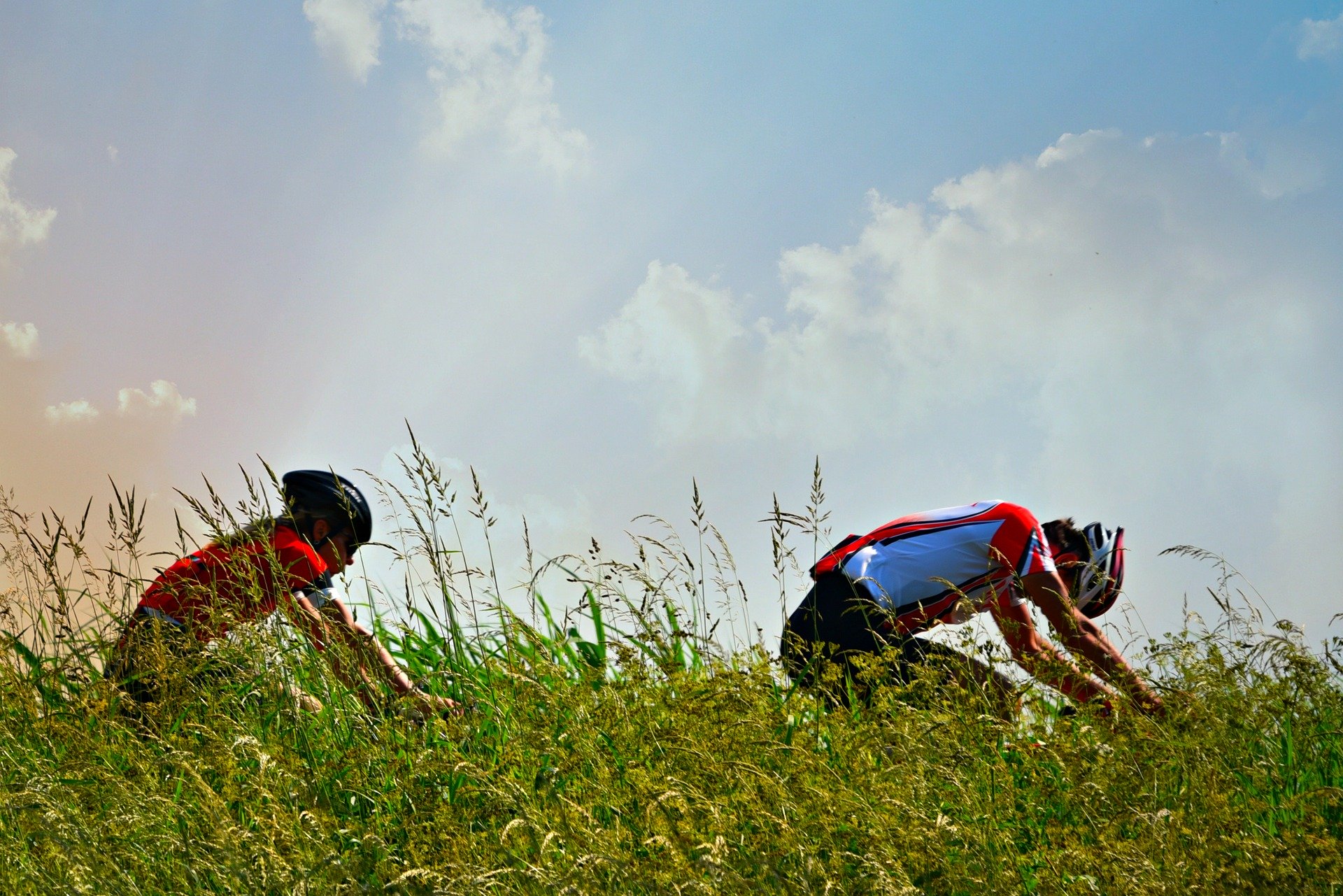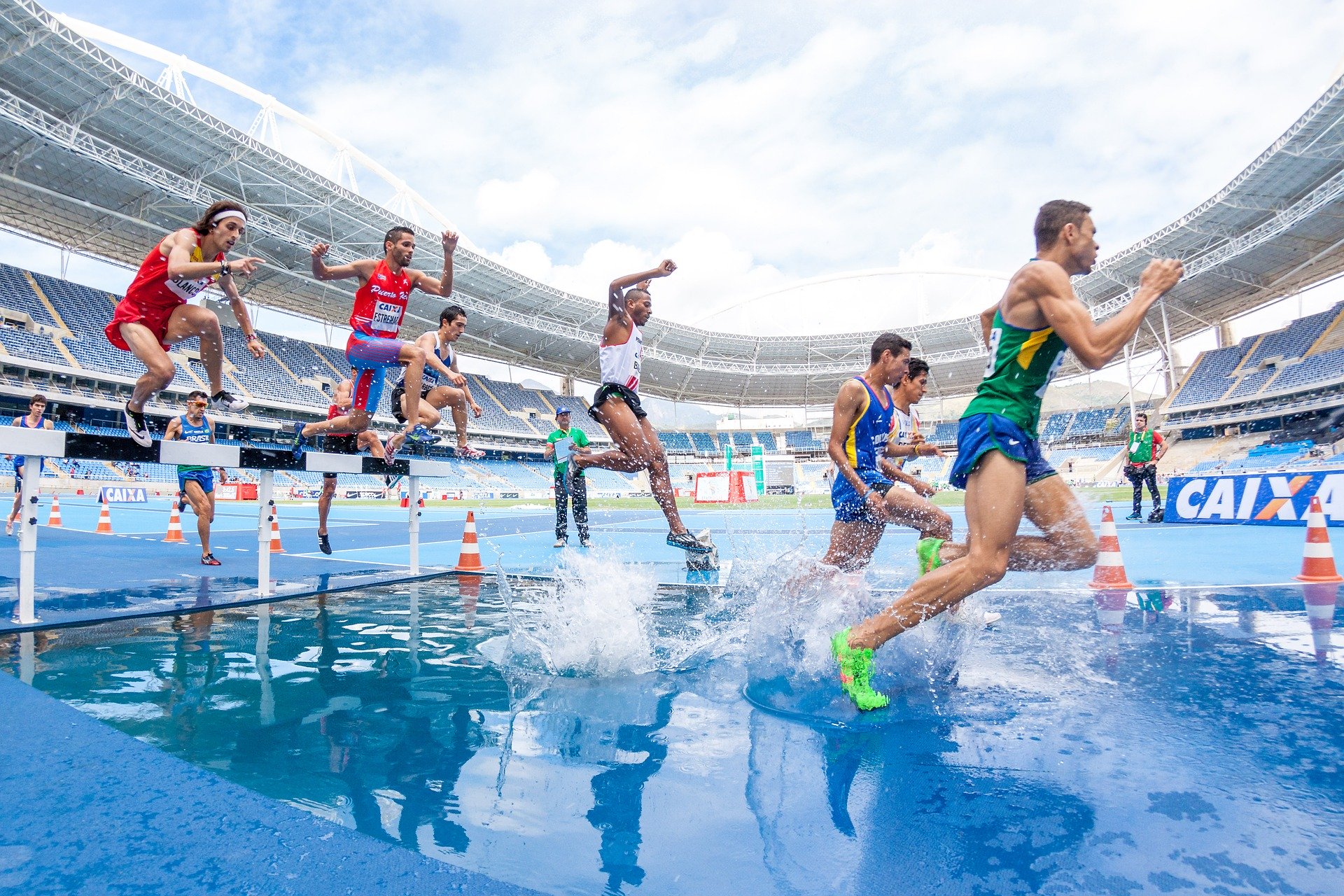In today’s globalized culture, a great many people consider ambition to be a necessity in life. Such ambition is tied to competition—wanting to rise up in the world, to become someone to be reckoned with, to be a “winner.” Business leaders in particular tend to be swift to make this point: “Competition teaches us big lessons. It drives us to be the best we can be,” or “Competition is always a good thing. It forces us to do our best,” to take only two of countless examples (as quoted in INC., 2018). If we do not have such ambitions, we are frowned upon. We may even be seen as a “loser.”
It’s true that all humans are genetically programmed to be ambitious and competitive in various ways. But our modern globalized culture—led in particular by the United States, as this sort of competition is a very American phenomenon (Duina, 2011)—has taken up this mantle of ambition in a dangerous way. Few other cultures around the world have made ambition into a driving force in life like the US does. Much has been said and written over the years about the virtues of being competitive; only rarely does anyone discuss the costs.
Most social scientists—not to mention the visionaries of the global economy—understand competition as a promise of excellence and ever-increasing achievement. Individual ambition has become tied to strategy in a variety of contexts, from the elementary school classroom to the corporate boardroom. But neither social science scholars or, indeed, the architects of modern society have considered the biological and evolutionary foundations of ambition. These are well known to the natural sciences. In biology, competition is an evolutionary function fulfilling specific tasks for the development of a species. To make competition into an explicit strategy, therefore, rests on the assumption that we can control evolutionary functions for specific purposes unrelated to their biological tasks. And that is a problem.
To make competition into an explicit strategy rests on the assumption that we can control evolutionary functions for specific purposes unrelated to their biological tasks. And that is a problem.
The Biological Purpose of Competition
It should come as no surprise that those who have implemented strategies that detach competition from its evolutionary origin have failed to achieve their desired results. And, in fact, research has consistently demonstrated that competition tends to counteract both individual health and the excellence in achievement and production it is intended to produce. Unfortunately, most social scientists have been undaunted by this research, having fallen prey to cultural values reifying their scholarship. They have therefore avoided looking at this question with a critical eye.
What, then, does this research say? Educators Mary Tallent-Runnels and Ann Candler-Lotven have compiled the pros and cons of competition (2008; pp. 12-23), as listed below:
Advantages
→ Prepares for competitive school and society
→ Provides feedback on achievement
→ Enhances focus and develops specific skills
→ May stimulate increased interest
→ Enhances achievement, motivation and productivity
→ Competing as group increases efficiency
Disadvantages
→ Makes a competitor self-centred, ability-focused, and oriented towards external motivation
→ Might drive a need to show superiority by avoiding risk
→ May cause the competitor to view ability rather than effort as the cause for success or failure
→ May not enhance performance on problem-solving or creative tasks
This phenomenon of paradoxical opposites has been dubbed by scholars studying competition the Beauty and the Beast paradigm. The term suggests that competition is simultaneously positive and negative—two sides of the same coin, as yet unexplained by social science. Adherents of this view argue that, to deal with the Beast, we must properly learn how to compete. We need only introduce rigorous rules and impose strict consequences for anyone breaking them. Moreover, as people tend to do when research does not make logical sense (even if only through the foggy lens of their culture), they want to pursue further research (e.g., Fülöp & Orosz, 2015).

We Are Wired to Cheat
In this case, however, this is largely wishful thinking. We already know enough to understand the issue, if we add one key perspective: the evolutionary functions of competition and ambition. If we do not account for these, we will not reach a correct understanding of human competitive behavior.
Consider the use of performance enhancing drugs in prestigious sports events. Rules for training and participating are stringently enforced to curb any temptation to cheat, and adherence to the rules is monitored by random checks throughout the year. Yet the number of cases caught flaunting these well-communicated rules are anything but decreasing (Sapstead, 2017). The possible gains if you win, given that your cheating remains undiscovered, are simply too great. In one survey, 198 American Olympic athletes were asked if they would use illicit drugs for better performance if they were also guaranteed to not be found out. Almost all of them said that they would use such drugs. If they also knew that they would potentially die from these drugs within five years, fifty percent of them would still do it (as reported in Ehrnborg & Rosén, 2009). We see the same unfortunate trend of breaking strictly enforced rules and norms in the academic (Diekhoff & Labeff, 2007) and banking worlds (Cohn, Fehr & Marechal, 2014).
In one survey, 198 American Olympic athletes were asked if they would use illicit drugs for better performance if they were also guaranteed to not be found out. Almost all of them said that they would use such drugs.
We are not only genetically programmed to compete and to be ambitious; we are also programmed with the potential to cheat when we subconsciously perceive an advantage worth the risk. The saying that “opportunity makes a thief” has an evolutionary foundation. This does not mean that everyone will do it. Most are more interested in preserving social cohesion by following explicit and implicit rules and norms. But there will always be a small number of people who will fall prey to the temptation. There is no way of predicting who will and who won’t. Cheating in one way or another is true of all living organisms. Even bacteria cheat, and for exactly the same reasons as humans do (Ghoul, Griffin & West, 2013).
Even if competition is invariably tied to problems, however, we must assume also that competing has a positive function. Otherwise it would not be such a fundamental function in the development of all living organisms. The question is when competition becomes a problem—and why.
What is Ambition For?
All biological organisms are ambitious and compete. But as far as humans are concerned, we compete for three reasons, all of which were programmed by evolution over eons of time:
→ A partner
→ Social status
None of these behaviors are necessarily initiated by premeditated planning. Hormones and situations interact to prompt us, unaware, to take competitive action when the need arises, or alternatively, when the opportunity for an advantage presents itself. All competition, however, is pursued at the expense of others, since all perceived resources are by necessity finite. Everyone cannot have everything, no matter how fair and wonderful this would be.
Competitive behavior, when triggered by cues in the environment, is basically a stress response. This means that as soon as we perceive the need to compete, hormones are released into our blood streams. These increase our chances of surviving, gaining a desired partner, or elevating our social status. Testosterone, for example, in both men and women, is perhaps best described as an “action hormone.” As it increases, it makes us more likely to take risks and to do what is perceived as necessary to achieve a certain goal (Sapolsky, 2002; 2017). Hormones like cortisol and adrenaline that are associated with a stress response affect our cognitive and physiological systems by increasing our self-confidence, making us more prone to risk-taking, and making us more focused on our goal at the expense of being considerate of others around us. But a stress response is designed to be temporary. If switched on indefinitely, it will eventually burn us out. That which is a definite advantage in seeking status, survival, and a partner becomes a threat to our own existence if we do not heed the warning signs of deteriorating mental and physical health.
The chances that we’ll succeed in a competitive situation, therefore, are much higher when we compete by choice (Tjosvold et al., 2006). To be forced into competing is always, sooner or later, detrimental to health. Achievement, production, and motivation will suffer. Hence, demanding that an entire work force be ambitious and competitive is likely to backfire splendidly. Pushing people to compete relentlessly—for better productivity, for climbing the organizational ladder, and to become “excellent”—will have precisely the opposite effect, and it will come at the expense of everyone who did not choose this way of life.
To be forced into competing is always, sooner or later, detrimental to health. Achievement, production, and motivation will suffer.

It’s true that some of us like to compete and see it as highly motivating. Even so, competitions still rely on a stress response. This becomes all too obvious when athletes train too much and don’t allow for enough recuperation between training sessions or contests. Enjoying the competition can counteract some of the damage; while you can learn to cope with stress to some degree, however, such coping has limits. There are no therapies or methods available to counteract physical and emotional exhaustion (Kraemer et al., 2000). Only leaving the competitive mode—being able to switch off—allows us to recuperate. Continuously high stress levels break down proteins, suppress the immune system, and cause fatigue; they may also cause diabetes, stomach ulcers, damage to long-term memory, depression, and disrupted sleep patterns (e.g., Norman & Henry, 2015). Most athletes are well aware of the dangers even though they thrive on being competitive, but 5-17% of them still overtrain (Halson & Jeukendrup, 2004).
What about those people who don’t like to compete? It is not difficult to imagine how problematic a competitive environment is for them. And while performance management is not likely to work well for any employee anywhere (Culbert, 2012), the creatively and intellectually gifted are particularly sensitive to external control and being forced into being competitive. These individuals tend to be uninterested in competing and being compared to others (Sapienza, 1997). They rather strive for mastery of their own skills. In pursing such mastery, they also tend to be their own fiercest critics. They do not need to be motivated to do what they do. It would be foolish for an employer to try to push these employees to “do even better.” Their creativity and performance will decrease, and their greatest employed assets will burn out. Rather than trying to make them do more, managers will need to make them do less just to prevent them from burning out (Lachner, 2012).
The creatively and intellectually gifted are particularly sensitive to external control and being forced into being competitive. These individuals tend to be uninterested in competing and being compared to others. They rather strive for mastery of their own skills.
Recommendations Based on a Thorough Understanding of Competition
It is not easy in modern society to avoid competition. The American ethos of ambition as always positive has become a global phenomenon affecting work and policies far beyond North America. This means we can no longer escape institutionalized and strategically-implemented competition. Learning how to compete to protect our health and welfare as best we can is essential. We would, however, be mistaken if we think that competition represents Beauty in this globalized fairy tale. It is more in tune with reality—and with empirical, cross-disciplinary evidence—to view competition beyond its three main functions of surviving, finding a partner, and seeking social status, as the Beast, which we rightfully fear and hopelessly seek to tame.
So, in what contexts does competition have reasonably positive effects, and when is it counterproductive and unhealthy? The research literature is vast, cross-disciplinary, and highly complex (Keddy, 2001; Persson, 2020; in press), but a few main points are nevertheless enlightening:
→ Competing in sports seems to be most in line with the evolutionary functions of competition, since winning is the only target and social considerations beyond stated rules are not. The physiological changes taking place when in “competitive mode” are designed for time-limited feats of strength, speed, narrowed focus, and maximizing every physical resource.
→ Groups competing with one another may also function reasonably well, be it either rival schools or companies competing for market supremacy. Research has demonstrated, however, that groups cooperating achieve much more and better together rather than being pitted against one another. Hence, co-operation rather than competing is a better choice.
→ It only takes one competitive individual to destroy the well-functioning cooperation of a team.
→ You cannot “compete against yourself.” The expression has a long tradition: it was allegedly coined by Roman emperor Julius Caesar and is still used frequently today. But it is a misnomer. It always takes more than one individual to compete. If you “compete” on your own, you are seeking intrinsically motivated mastery. If you compete in a true sense, you are extrinsically motivated by a perceived reward in which others are also interested.
→ Introducing competition as a strategy for better performance turns intrinsic motivation into extrinsic. The result of this is that individuals take greater risks in achieving their goal at the expense of being meticulous and seeing a certain task as rewarding in itself. The ultimate example is being motivated by grades in education. We would be much better off without them! When grades become important, students will usually sacrifice learning as a reward in itself. Winning a decent grade becomes the path to becoming a “winner” (Henderson & Dweck, 1990).
→ The venturesome but average contestant is more likely to win a contest rather than the gifted one, and not because of talent or intellectual ability. They win because they are more daring risk-takers (Sahm, 2010).
→ It is unlikely that you can successfully identify intellectual, creative, and artistic talent by competition, whereas it makes sense to identify sports talent this way.
→ Entering a contest, and winning or losing it, alters your personality because of underlying physiological changes. While it is true that you become more focused, assertive, more physically coordinated, and stronger if you secure a win, it is equally true that you decrease in empathy and sympathy. Moreover, you become prone to taking greater risks without necessarily considering the potential result if you fail.
→ If you win something in a contest with others, your testosterone levels rise and remain high for several weeks. During this time, your self-confidence is unusually solid, you take more risks than usual, and you tend to also become somewhat irrational. You are likely to be convinced that everything is possible, no matter how impossible it actually is. Interestingly, this is a typical attitude of the extremely wealthy. Their confidence is not likely based on rational arguments based on facts, but rather on hormone-induced self-confidence (Zitelmann, 2017). If you lose a contest, on the other hand, your testosterone levels are lowered. Your self-confidence suffers, you feel blue, your stress levels increase, and your cognitive abilities like concentration and memory will suffer somewhat, especially over time.
→ Being aware of competition as a formal contest and actually competing by a triggered hormonal response are not necessarily the same thing. We can go through the motions of competing formally, but a physiological response is not triggered unless we perceive a way to increase status, a threat, or a potential partner we wish to impress. The triggering mechanism for competition is unconscious and beyond volitional control.
Ultimately, everyone would benefit from avoiding institutionalized competition if possible. It serves little purpose as a management strategy. Not competing would be the most beneficial for gifted individuals, who tend as part of their character to seek mastery of whatever interest or skills they possess. To impose a competitive demand on this group of individuals only replaces their intrinsic motivation with an extrinsic one, thereby disenchanting them and endangering their health.

Competing as a group against other groups makes more sense, but research has demonstrated that cooperation rather than competition is more productive. There is a reason why Homo sapiens, believed to have been a non-social species early in our history, eventually evolved into a species of cooperation. Every member gained from it. In the global economy, however, this is long forgotten—or even ignored—and its management, inspired mainly by American cultural tenets, is consistently pitting individual against individual in both education and at work, wrongly believing that this makes all of us excel and improve. Business leaders and many others in society who argue that competition drives us to be the best we can be, or that competition is always a good thing forcing us to do our best, are wrong at best. They may be misinformed; or their assertions may be hormonally inspired (cf. Zitelmann, 2017). If it’s the latter, it is unlikely that their visions and public statements reflect objective facts.
In any case, both competition and ambition are here to stay, but it is our decision how we will relate to them. We can decide whether to play along at the potential peril of our health, or to make life choices—probably less glamorous—that put us in a better position to choose when to compete and when to avoid it.
References
Cohn, A., Fehr, E., & Maréchal, A. (2014). Research letter: Business culture and dishonesty in the banking industry, Nature, 516, 86-89.
Culbert, S. A. (2010). Get rid of the performance review. How companies can stop intimidating, start managing, and focus on what really matters. New York: Business Plus.
Diekhoff, G. M., & Labeff, E. E. (2007). College cheating: a twenty-year follow-up and the addition of an honor code. Journal of College Student Development, 48(4), 468-480.
Duina, F. (2011). Winning: reflections on an American obsession. Princeton, NJ: Princeton University Press.
Ehrnborg, C., & Rosén, T. (2009). The psychology behind doping in sport. Growth Hormone & IGF Research, 19, 285-287.
Fülöp, M., & Orosz, G. (2015). State of the art competition research. In R. Scott & S. Kosslyn (Eds.), Emerging trends in the social and behavioural sciences (pp. 1-16). Hoboken, NJ: John Wiley & Sons.
Ghoul, M., Griffin, A. S., & West, S. A. (2013). Toward an evolutionary definition of cheating. Evolution, 68(2), 318-331.
INC. (2018, 4 July). Twenty brilliant quotes on competition from highly successful business leaders. https://www.inc.com/peter-economy/ (Accessed 26 January 2020)
Halson, S. L., & Jeukendrup, A. E. (2004). Does overtraining exist? An analysis of overreaching and overtraining research. Sports Medicine, 34(14), 967-981.
Henderson, V. L., & Dweck, C. S. (1990). Motivation and achievement. In S. Feldman & G. R. Elliott (Eds.), At the threshold: The developing adolescents (pp. 308–329). Cambridge, MA: Harvard University Press.
Keddy, P. A. (2001). Competition (2nd Ed.). Dordrecht, NL: Springer Science.
Kraemer, W. J., Fry, A. C., Rubin, M. R., Triplett-McBride, T., Gordon, S. E., Koziris, L. P., Lynch, J. M., Volek, J. S., Meuffels, D. E., Newton, R. U., & Fleck, S. J. (2001). Physiological and performance responses to tournament wrestling. Medicine and Science in Sports and Exercise, 33(8), 1367-1378.
Lachner, M. (2012). Talent-Management spezial: Hochbegabte. Forscher, Kuenstler … erfolgreich fuehren [Special talent management: the gifted, the researchers, the artists and to lead them successfully]. Wiesbaden. Germany: Gabler Verlag.
Norman, A. W., & Henry, H. L. (2015). Hormones (3rd Ed.). London: Academic Press.
Persson, R. S. (2020, in press). Ambitious humanity: The uses and abuses of competing. Ulm,
DE: International Centre for Innovation in Education (ICIE).
Sahm, M. (2010). The contest winner: gifted or venturesome? (CESifo Working paper no. 3285), http://www.CESifo-group.org/wp (Accessed 5 December 2018).
Sapienza, A. M. (1997). Forscher managen. Management fuer Naturwissenschaftler und Ingenieure [To manage researchers. Managing natural scientists and engineers]. Berlin: Wiley-VCH.
Sapolsky, R. M. (2002). Endocrinology of the stress response. In J. Becker (Ed.), Behavioral Endocrinology (2nd Ed; pp. 409-450). Cambridge, MA: MIT Press.
Sapolsky, R. (2017). Behave: the biology of humans at our best and worst. London: Bodley Head.
Sapstead, N. (2017, 20 March). Doping in sport: drug use ‘fast becoming a crisis.’ BBC Sport on-line, https://www.bbc.com (accessed 10 May 2019).
Tallent-Runnels, M. K., & Candler-Lotven, A. C. (2008). Academic competitions for gifted students (2nd Ed.). Thousand Oaks, CA: Corwin Press.
Tjosvold, D., Johnson, D. W., Johnson, R. T., & Sun, H. (2006). Competitive motives and strategies: understanding constructive competition. Group Dynamics: Theory, Research, and Practice, 10(2), 87-99.
Zitelmann, R. (2017). Psychologie der Superreichen: das verborgene Wissen de Vermögenselite [The psychology of the superrich: The hidden knowledge of the wealthy elite]. Munich, DE: Finanzbuch Verlag.




